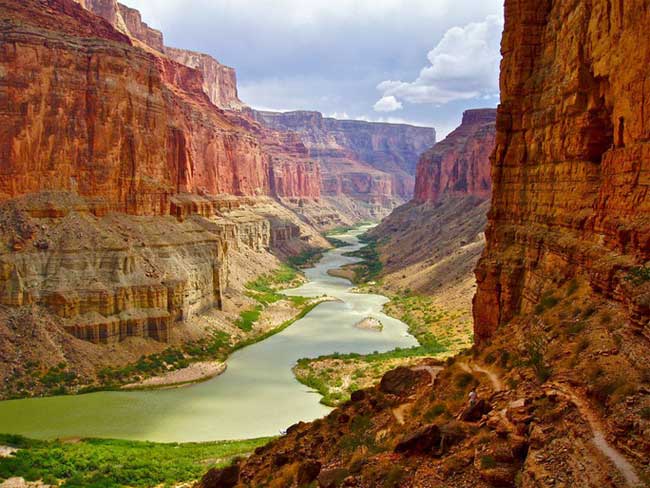The mystery of nearly 150 million years of the Grand Canyon, a strange land where rocks are billions of years apart in age, has just been unraveled: it is the remnants from the breakup of the supercontinent Rodinia.
According to Science Alert, since 1869, geologist John Wesley Powell, while traveling down the Colorado River in the United States, at the famous natural landmark known as the Grand Canyon, discovered rocks dating back 1.4 to 1.8 billion years alongside rocks that are only 520 million years old. There are no rocks of intermediate age. This mysterious “gap” – a void of about 1 billion years in the geological record of the area – has left a significant question lingering for centuries.

The Grand Canyon is evidence of the existence and breakup of the supercontinent Rodinia – (Photo: NATIONAL GEOGRAPHIC)
A recently published study in Geology reveals that using modern methods, a team of scientists from the University of Colorado Boulder has found the answer: the parts of the Grand Canyon in the past were not continuous, with some portions having been shifted in various ways over millennia, leading to some rocks and sediments being washed out to the ocean.
This phenomenon could only occur due to extremely harsh tectonic activity, involving a series of small but significant fault events. Notably, this missing time correlates with a timeframe that other evidence suggests was the period of the breakup of the supercontinent Rodinia, which occurred about 633 to 750 million years ago.
Thus, the Grand Canyon serves as a vivid testament to the “chaotic tectonic phase” that scientists believe Rodinia experienced. This region is like a “Frankenstein” in geological history: its Eastern and Western parts once belonged to two entirely different regions, with vastly different temperature conditions. It seems that some “intermediate” fragments of land have been lost, while two pieces from distant parts of Rodinia have been pushed closer together and stitched together to form the fascinating land we see today.





















































